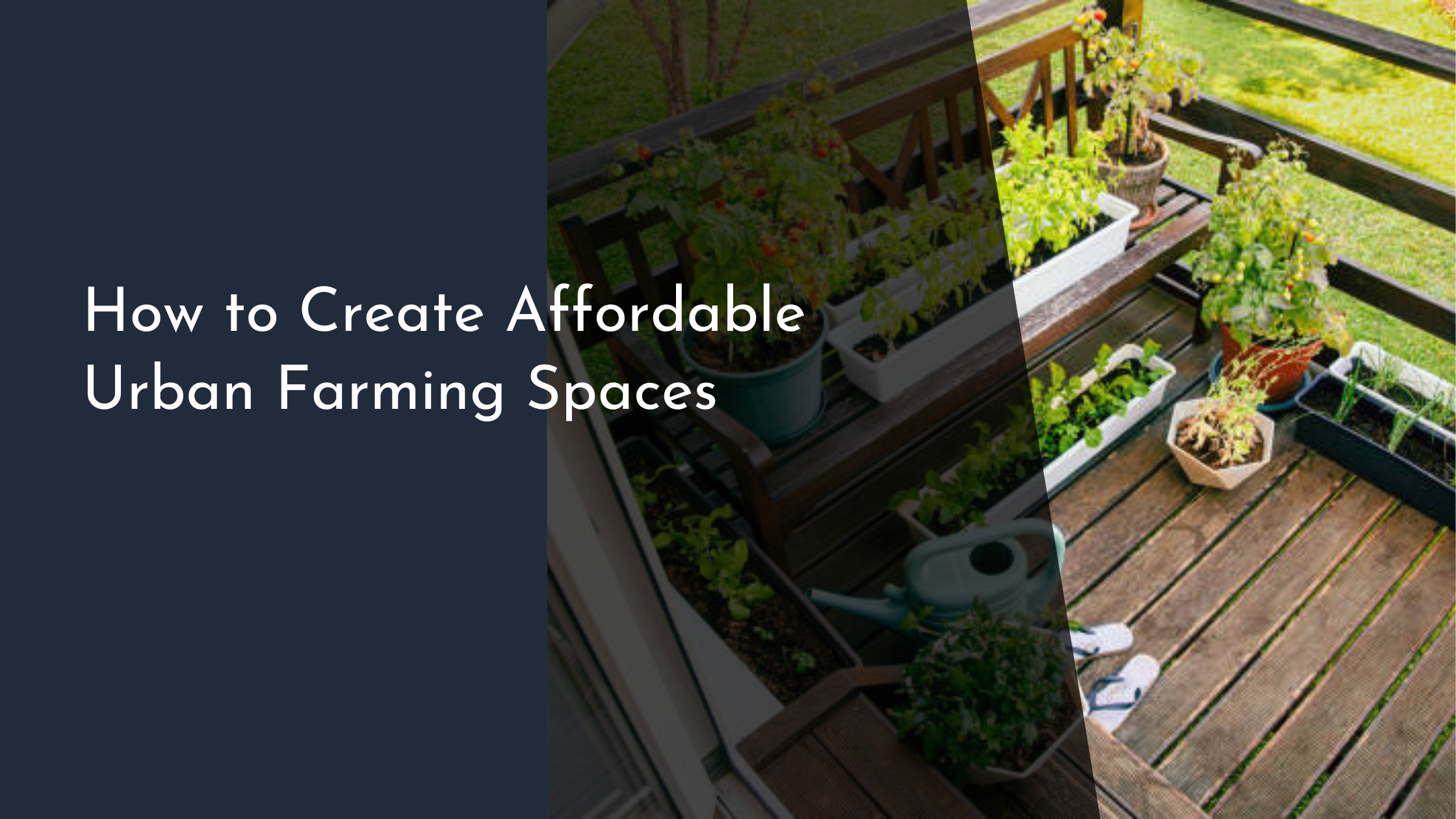How to Create Affordable Urban Farming Spaces
Urban farming is more than just a trend; it’s a sustainable way to bring fresh produce to the heart of our cities. With the increasing interest in locally-grown, organic food, urban farming is becoming an essential part of urban living. However, the cost of setting up these green spaces can be a hurdle for many. This article explores how to create affordable urban farming spaces, providing practical tips and insights to turn any urban nook into a thriving garden. Whether you have a sprawling rooftop or a small balcony, you can contribute to the urban farming movement without breaking the bank.
Understanding Urban Farming Essentials
Urban farming involves growing plants and raising animals within and around cities. The primary goal is to integrate agriculture into the urban environment to improve food security and sustainability. Understanding the essentials of urban farming is crucial to create a successful and budget-friendly urban farm. Key elements include knowing the types of crops suitable for your climate, understanding soil health, and being aware of water management techniques. These factors will determine the success and sustainability of your urban farm, guiding you in making informed decisions about what and how to grow.
It’s important to set clear goals for your urban farm. Are you growing purely for personal consumption, or do you plan to sell your produce? This decision will influence the scale and type of farming practices you adopt. Think about your available space, time, and resources. Start small and gradually expand as you gain more experience. Becoming familiar with your local community resources such as gardening groups, agricultural extension services, and urban farming workshops can provide valuable support and knowledge.
Choosing Cost-Effective Materials and Tools
One of the biggest concerns when setting up an urban farm is cost. Luckily, there are numerous ways to keep expenses low by choosing cost-effective materials and tools. Opt for second-hand tools from thrift stores or community swaps, which are often good as new. Consider using recycled materials, like old pallets for raised beds or containers made from repurposed items like buckets and barrels. These can significantly cut costs while promoting sustainability.
Invest in materials that have multiple uses. For instance, purchase a high-quality, durable hose that can serve your watering needs all year round. Another tip is to buy seeds in bulk with friends or other urban farmers to save money. Additionally, utilize composting to create your own nutrient-rich soil at no extra cost. By being resourceful and leveraging community resources, you can equip yourself with the necessary tools and materials without overspending.
Maximizing Space in Small Urban Areas
Urban spaces are often limited, so maximizing every inch is key to a successful urban farm. Vertical gardening is an excellent solution for small areas. It allows you to grow upwards instead of outwards, using walls, trellises, and shelving units to make the most of your space. Hanging baskets and tiered planters can also help to utilize vertical dimensions efficiently. This method is ideal for crops like peas, beans, and tomatoes.
Consider multi-cropping and companion planting to make the most of your available ground space. This involves growing different plants together that can mutually benefit each other and improve yield. For example, planting basil with tomatoes can enhance the growth of both. Furthermore, make use of any available surfaces such as windowsills, balconies, and rooftops, turning them into productive areas. Be creative with your planting layouts, and focus on plants that suit your space and light conditions.
Creative Ideas for Budget-Friendly Urban Gardens
Creativity is your best friend when setting up a budget-friendly urban garden. One idea is to create a community garden with your neighbors. This not only splits the cost but also builds a sense of community and shared responsibility. You can exchange seeds, tools, and even the fruits of your labor. Such cooperation can substantially reduce individual expenditures.
Another innovative approach is using household items as planters. Old tires, shoe organizers, and even furniture can be repurposed into unique and functional garden containers. This not only saves money but adds a quirky element to your garden space. Additionally, you could look into DIY hydroponics systems, which, although requiring an initial investment, can be more cost-effective in the long run by increasing yield and reducing the need for soil and space.
Creating affordable urban farming spaces is an attainable goal with some creativity, resourcefulness, and community collaboration. By understanding the basics of urban farming, choosing cost-effective resources, maximizing your space, and employing creative solutions, you can enjoy the bounty of urban agriculture without financial strain. Embrace the challenge, and turn your urban environment into a green sanctuary that nourishes both body and soul. Happy farming!


